be quiet! Silent Wings Pro 4 140mm Review
Introduction
At the very top of be quiet!'s newest Silent Wings 4 lineup sits the Silent Wings Pro 4 in 140mm form factor. By using the new wing design paired with ridiculous speeds, the new contestant promises to blow everything that came before, out of the way! Let's see if they can keep the promise.
Positive
- Best-in-Class PWM Header
- Excellent Performance
- Different Frame Edge Options
- Different Mounting Options
Neutral
- All-Black/Matt-Black Design
Negative
- Max-Performance could be tick-better for 2400RPM
- Noise-to-Performance ratio should have been better compared to the 120mm version.
What's in the box?

Similar to the Silent Wing Pro 4 in 120mm size, and basically every other be quiet! fan in existence, the box features a bit of imagery as well as some specs and feature introductions. The only difference that you will find is the main image and the name.
Inside the box, we will find the fan itself and an additional accessories box. Inside that special box, we will the additional corner pieces which will be covered later on as well as the usual and not-to-usual mounting hardware.
| Name | be quiet! Silent Wing Pro 4 (140mm) |
| Size | 140x140x25mm |
| Speed |
Up to 2400 in UHS Up to 1900 in HS Up to 1100 in MS |
| Airflow | 97.41CFM |
| Static Pressure | 3.64mm/H2O |
| Noise | 36.8dBa |
| Connection | PWM |
| Bearing | Fluid Dynamic Bearing |
| RGB | No |
Installation

As we are used to, the installation procedure or the mechanical aspect of it, is a choice for a Silent Wing fans. Instead of forcing everybody to use the usual fan-screw approach, be quiet! added additional methods by making the 4x edges of the fan replaceable with a number of alternative approaches.

By default, the frame edge that comes pre-installed was primarily designed to be used on top of radiators. Contrary to every other edge piece, these fully-covering pieces are preventing any air to escape outside the fan frame. This was particularly damaging for the previous generation's radiator use cases.
Although these edge pieces are meant to be used with radiator screws, we can also use them as case fans as the self-threading case screws will work as well.

Inside the accessories box, we will find the Push-pin and regular fan screw approaches.
In order to replace them, simply grab the edges of the fan and push in the out sticking pieces of plastic. This will release the holding mechanism and you can pull the corner away. After deciding on an alternative, simply push it onto the edge.

The Push-Pin approach is primarily meant to be used for case-fan applications as its rubberized corners are designed to remove any left-over vibrations. Although the difference might be neglidable at best, simply pushing a pin through a piece of metal and into the fan seems like a ridiculously easy and quick method to fill a build with dozens of fans.
The last corner is the regular fan screw corner. Although it's self-explaining its use case, we wanted to remind you that the radiator mountings (which prevent any air leakages) can be used with those screws too.
New PWM Header

Although we are usually focused on performance alone, we are unable to ignore the tremendous efforts that went into designing a new PWM header.
Instead of the very short and kinda fiddly PWM connection that we all know, be quiet! created its own.
While the cable is 500mm long, it is sleeved in a fabric material providing it with additional rigidness, and also a high-quality feeling. But the connector itself got the biggest upgrade. Being significantly longer, the new be quiet! PWM connector makes it incredibly easy to push or pull it while losing all of the PWM connector's inherited fiddliness. We sincerely hope that this becomes the industry standard.
Speed Switch

As seen on the 120mm version or alternative fans like a Phanteks T30, the 140mm Pro's have their own massive speed switch on their back side.
Switching this button allows the fan to be throttled to a maximum of RPM 1900RPM (High-Speed HS) or 1100RPM (Mid-Speed MS). The most important setting would be UHD or Ultra-High-Speed Mode will unlock the fan to be spinning at its maximum 2400RPM.
Although we understand the idea behind this approach, we are not big fans of speed switches at all as the same result can be achieved by simply setting a PWM curve. Something that should be done anyway.
Appearance
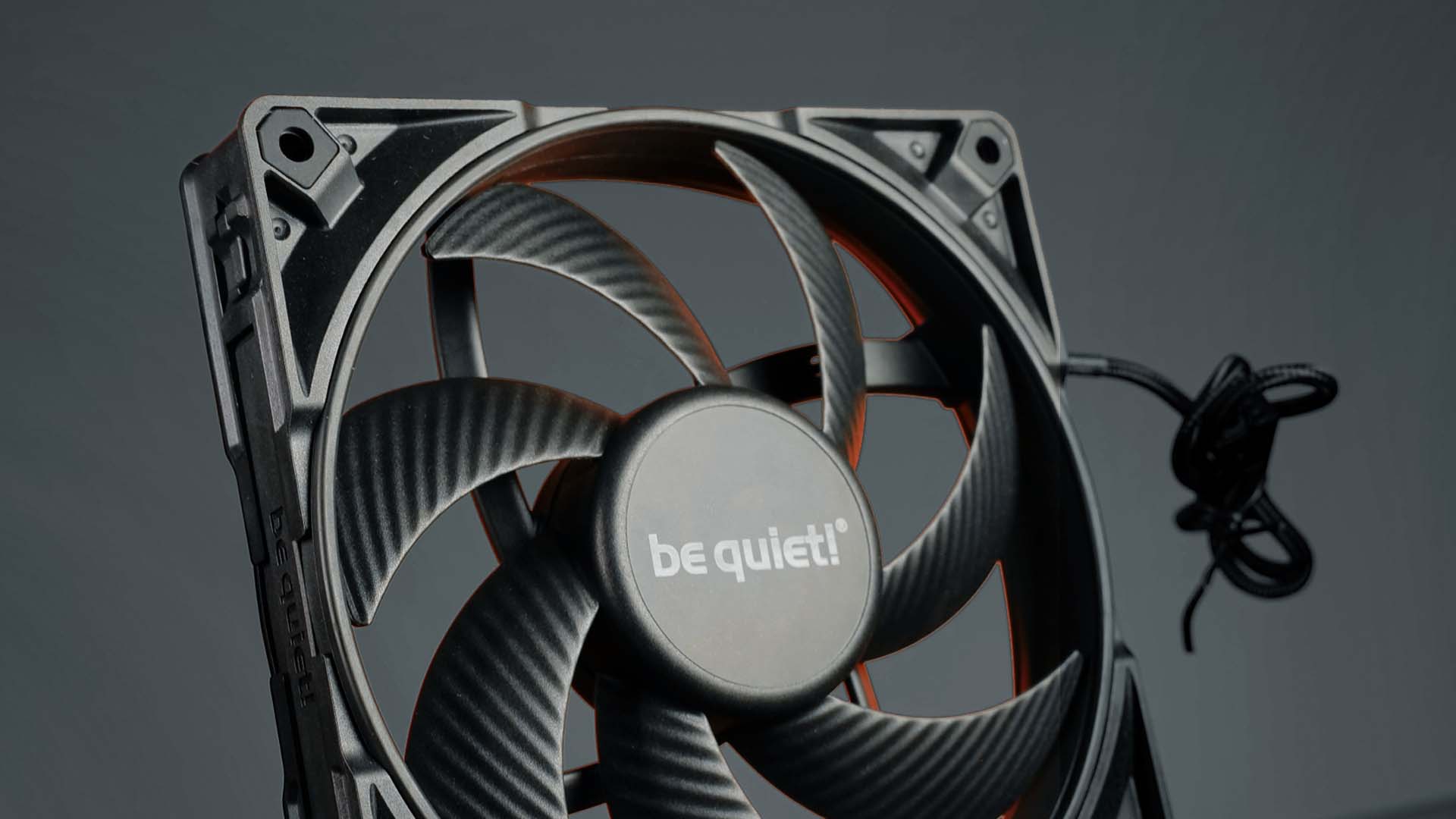
Speed alone can not make for a new product, however. Therefore, be quiet! introduced a new Wing design. Instead of the decade-old be quiet! thick and slightly bent approach, we now got 7 aggressively bent wings.
This approach was developed in order to create greater static pressure whilst not maximizing its noise. A change that will definitely benefit the fan's performance on top of radiators and heatsinks.
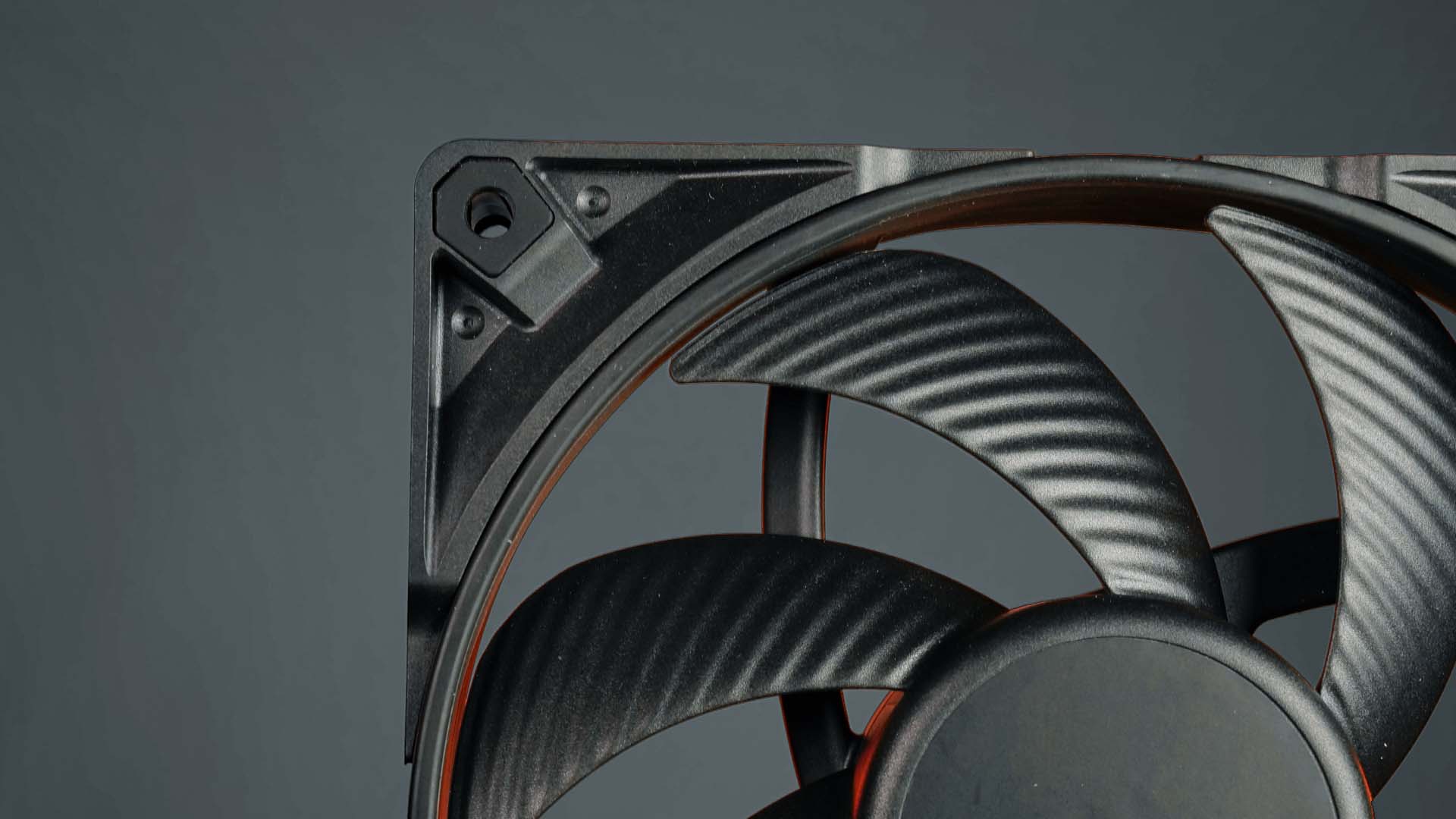
Important to note here, however, is the fact that the 120mm and 140mm version do not share the exact same approach. While the 140mm Pro's are turning with 7 wings, the 120mm version comes with 9. How this might affect performance can be seen in the benchmarks section.

Additionally to the new wings, be quiet! also made some changes to the fan's overall optical design. Now in all-black, the central pieces feature a mat-black finish with a be quiet! logo cut out in black instead of the older orange. These changes paired with the new radiator mounting pieces make the fan look significantly more aggressive and compete with the design approaches from Noctua and Phanteks. Overall we must say that the new SW4s are looking very clean and easily intergradable into any design, especially all-black-focused designs.
Benchmark
We benchmarked the new be quiet! Silent Wing Pro 4 140mm on our usual test bench using a 3700x.

While letting the Fans spin at their max 3000RPM, they managed to keep the CPU at 42°C above ambient. This places them slightly behind the 120mm counterpart, but in front of any other 140mm fan we have tested until now.

On the noise-to-performance comparison, we were able to observe the same phenomenon. Although the Pro 4 140mm's managed to outperform most fans we have seen so far, they are still slightly behind or can barely match the 120mm's performance.
These results showed us that we seem to have reached a point where the amount of air doesn't contribute as much to performance as it did before. While the 120mm version might not be pushing as much air, its 2mm/H2O static pressure difference seems to have had an immense impact.
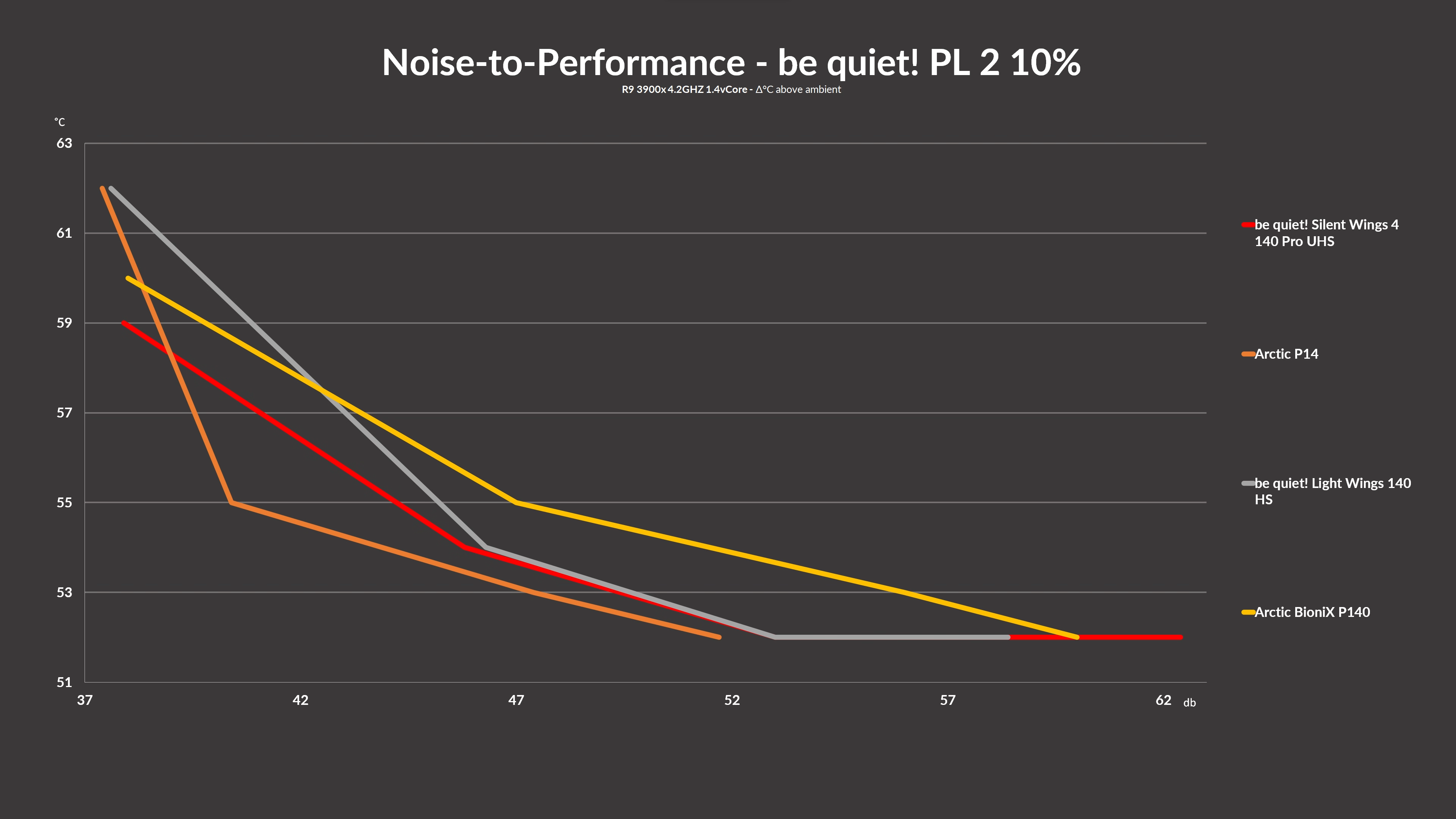
Additional to our usual testing suite, we wanted to see how the SW4 Pro 140mm performs the use-case that it was actually designed for. Using a be quiet! Pure Loop 2 280mm radiator with the pump running at 10% of its potential, we compared it to the Light Wings 140 HS and Arctic's BioniX P140 as well as regular P14's.
In this comparison, we were quite shocked to see that although the SW4 Pro managed to beat most of the fans, the P14's exceptional noise ommissions were unmatched for the most part. An aspect in which the SW4 Pro line is unbeatable, however, its performance at extremely low speeds, here the SW4 managed to take the lead and perform ridiculously well.
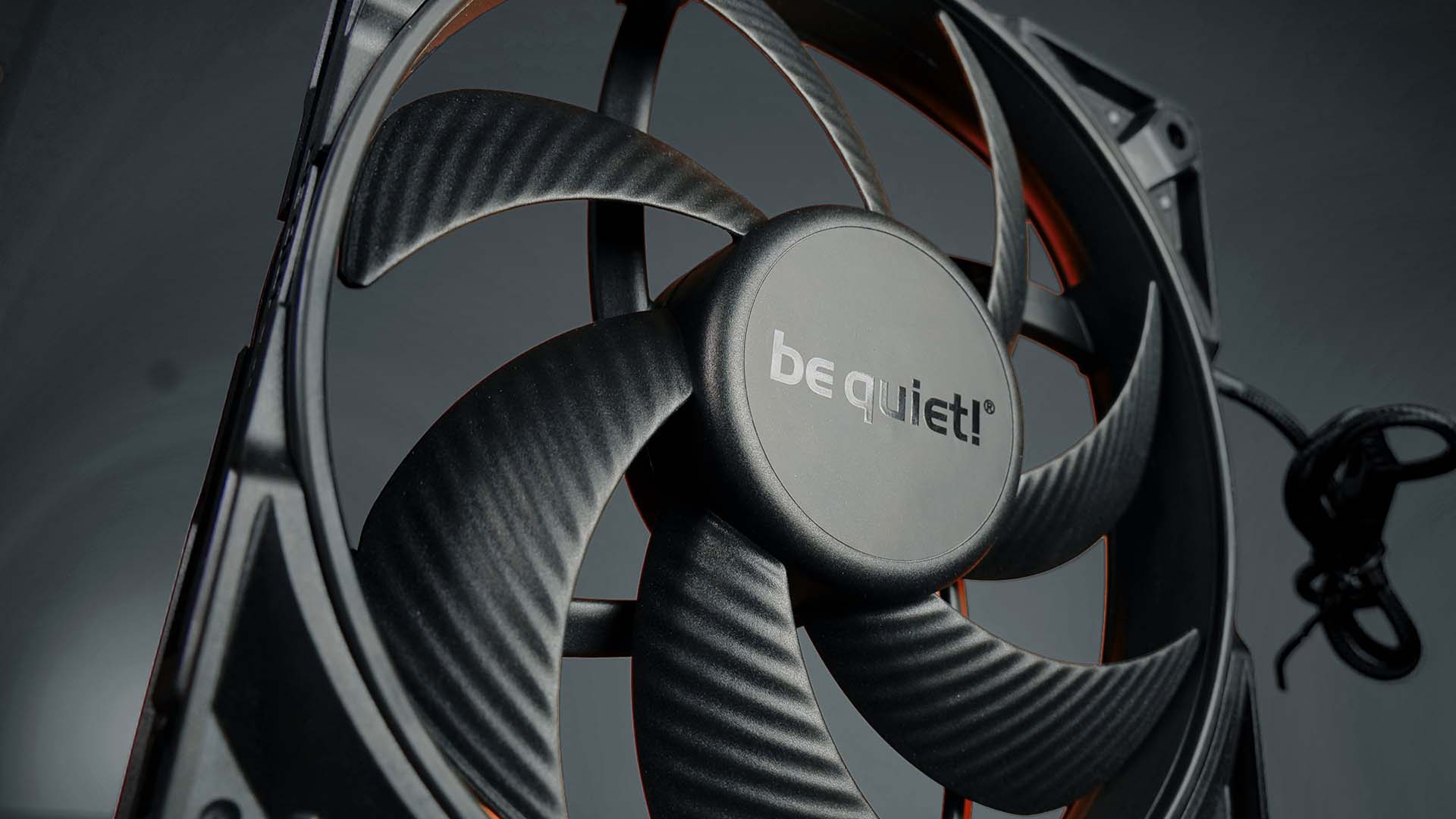
Although this test already showed an indication of how these will perform inside a regular system with the pump running at max speed, we do not believe that this test was decisive enough. By "only" pulling 130w TDP on the socket, the 280mm radiator is completely overpowered for this "small" use case. Therefore, all of the fans are not even reaching their true potential and staggering stalling at the exact same temperature. We will come back to this issue at some point in the future, as soon as we have the necessary hardware to truly test these fans.
Conclusion

All in all, we are huge fans of be quiet!'s new Silent Wing 4 lineup.
The design changes were unexpected, and the performance gains won by changing the wing design are exactly what we've hoped for.
But also smaller things got a healthy amount of attention. While the new and easier-to-remove edge pieces are a nice touch, we are truly amazed by their improved PWM cable.
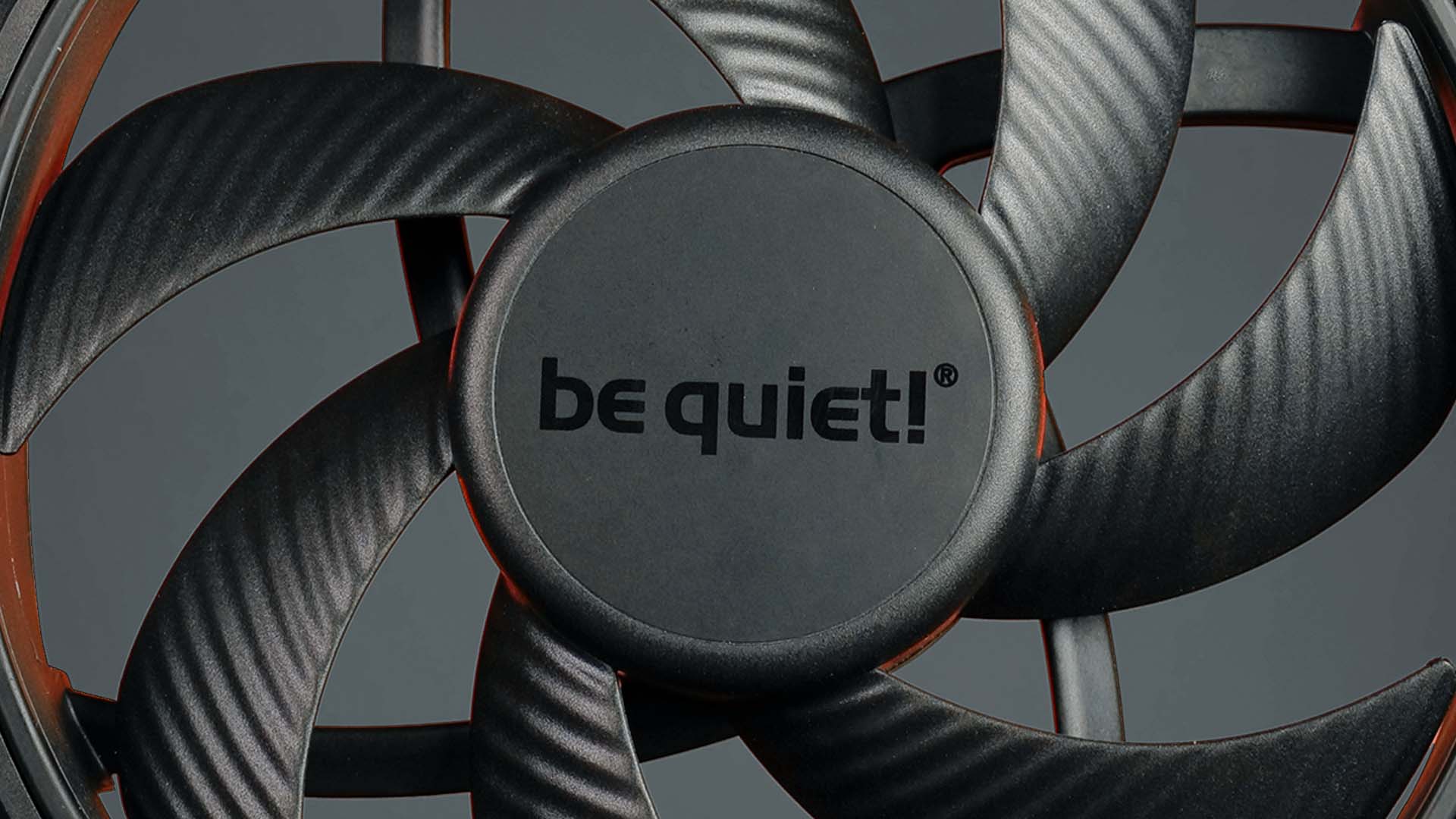
But in the end, performance is the most important aspect. Here, it's kind of a complicated topic. Out of all of our previously tested 140mm Fans, the Silent Wings 4 Pro 140mm are definitely the best. They come with the best of both worlds, the high-noise-to-performance efficiency seen on the slower spinning model, and the ridiculous performance overhead created by the max 2400RPM.
All of this seems to be amazing. However, the Silent Wings Pro 4 120mm exists. It seemed weird to us in the beginning, but it turns out that the combination of 9 Wings paired with the insane static pressure found on the 120mm model is just a better mix than what the 140mm models have to offer. Although the difference might be negligible or marginal, we found it.

Therefore, sure, we loved the Pro 140mm version, and we are definitely recommending it. But keep in mind that there is no performance gain to be found over the 120mm models as far as case-fan usages are concerned.

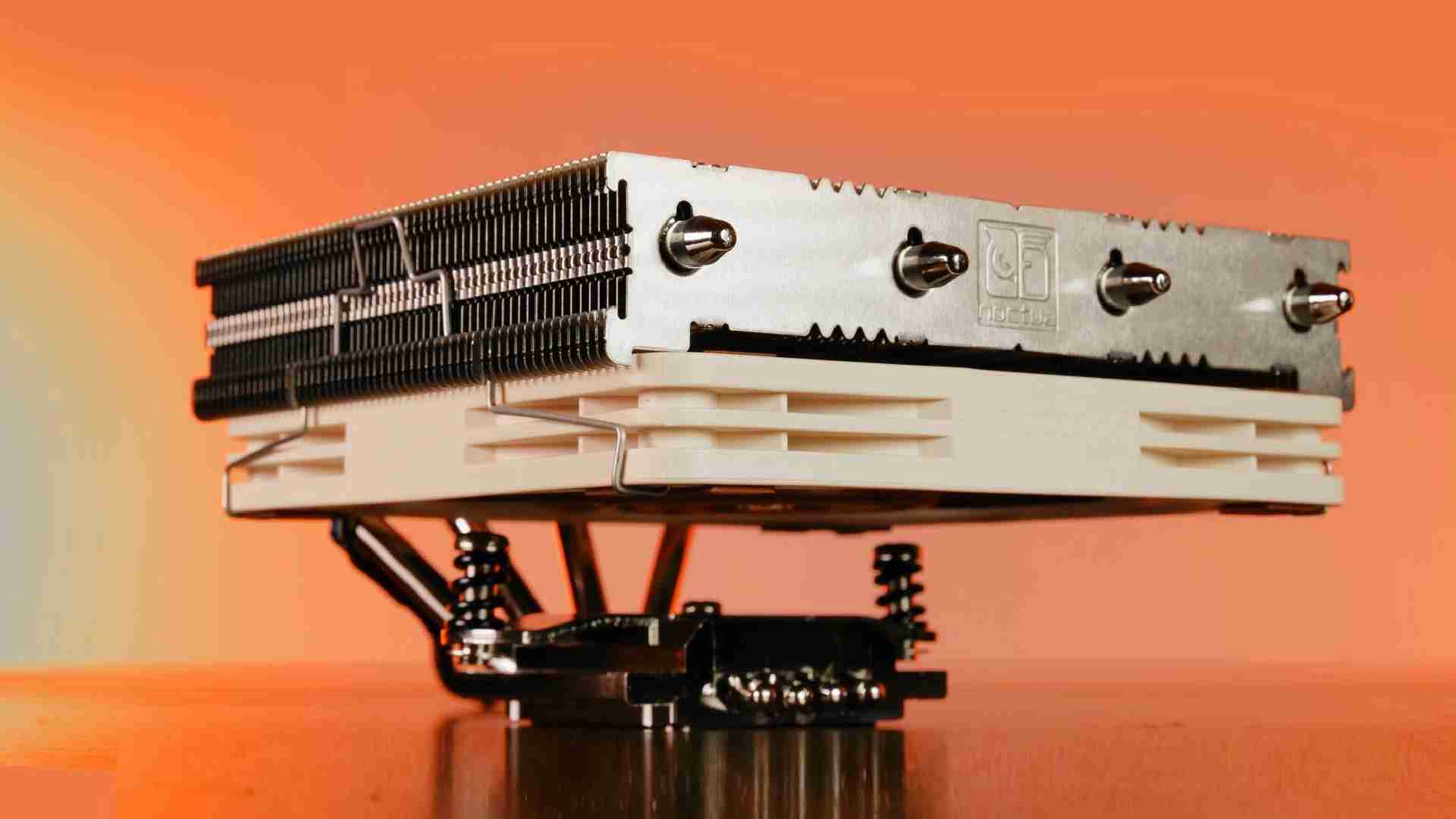
Noctua NH-L12S Review
For anybody building a real small form factor PC, Noctuas NH-L12S should not be forgotten. Being only 70mm high, it is one of
Read More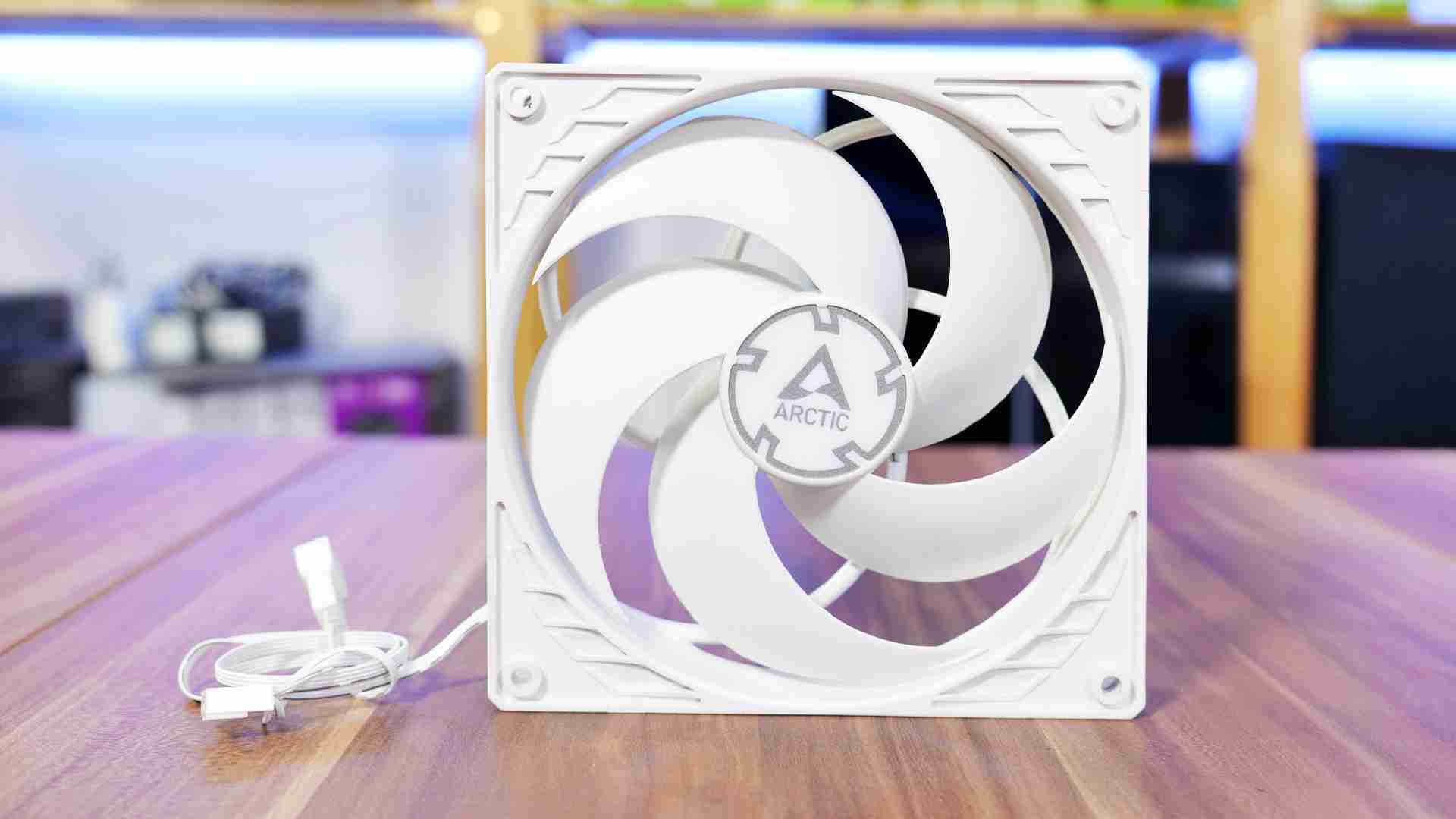
Arctic P14 PWM PST Review
We were already impressed by the Arctic P12, now we will take a closer look at the Arctic P14. Lets see if the bigger 140mm m
Read More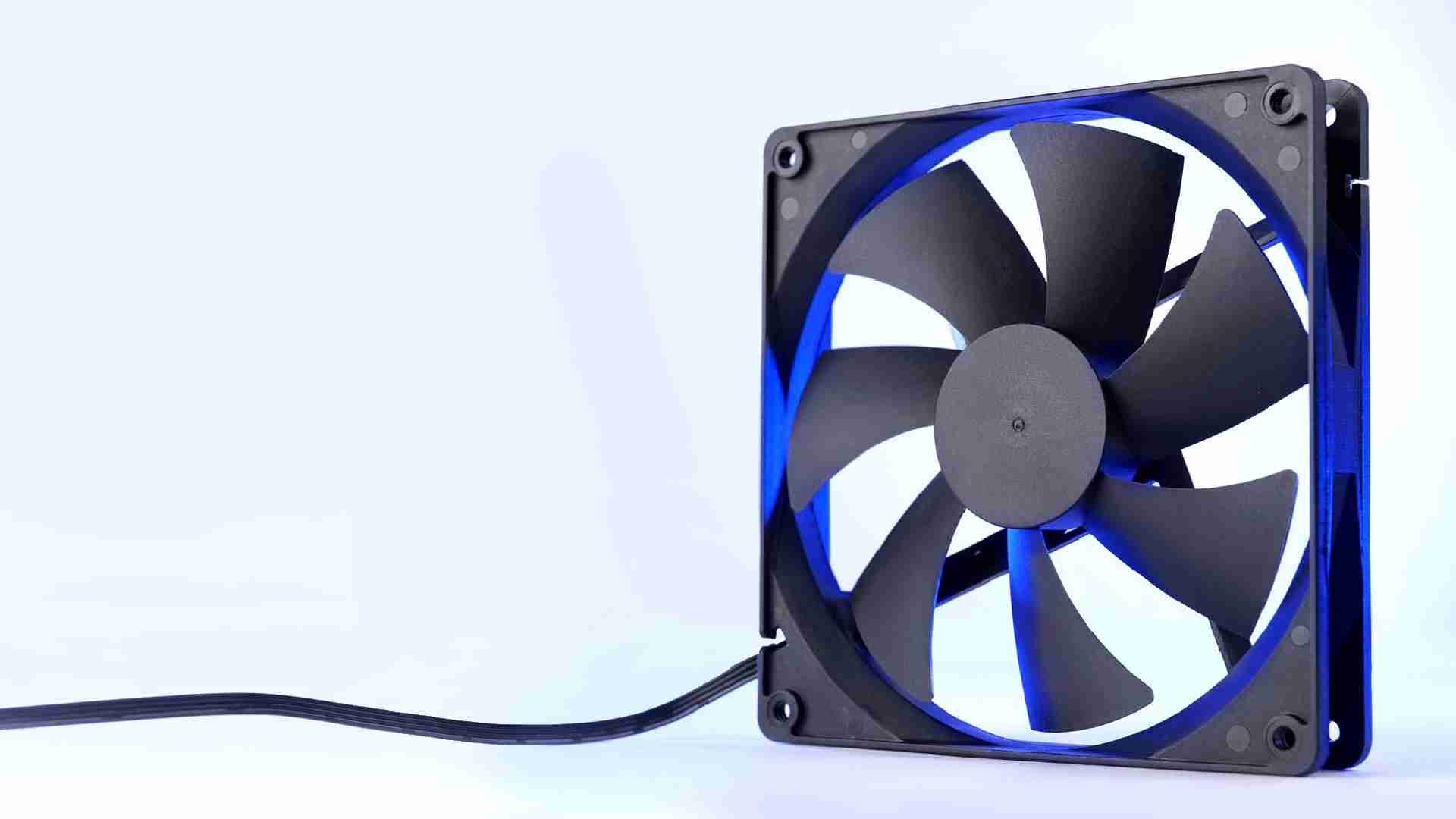
Alphacool Core 140 2500RPM Review
While the Core 140 2000RPM managed to slightly elevate the Core 140 lineups noise-to-performance ratio compared to the smalle
Read More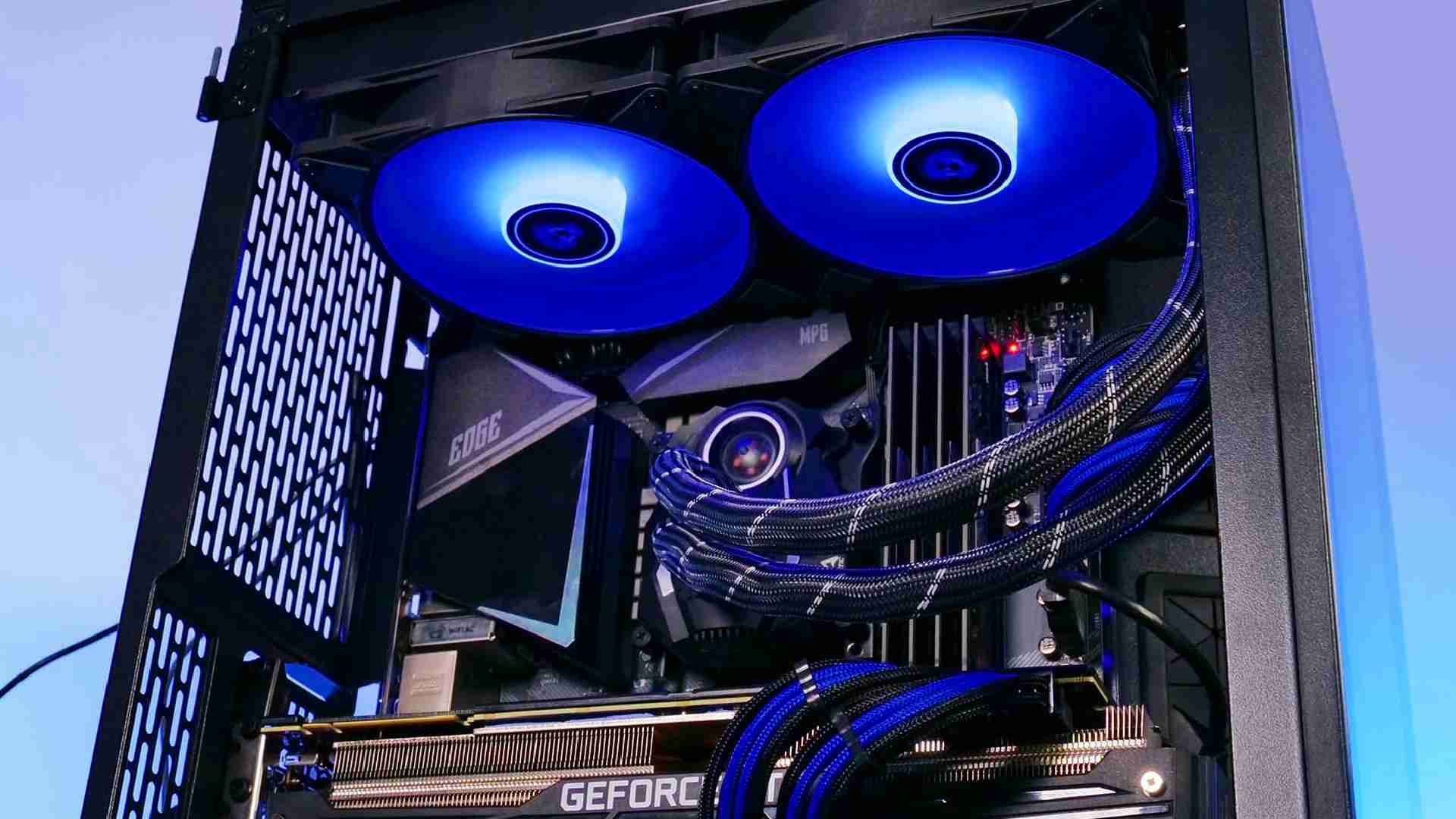
Arctic Liquid Freezer 280 ARGB Review
Arctic finally went 140! With two 140mm fans, Arctics newest Liquid Freezer 280 promises to deliver even greater cooling with
Read More